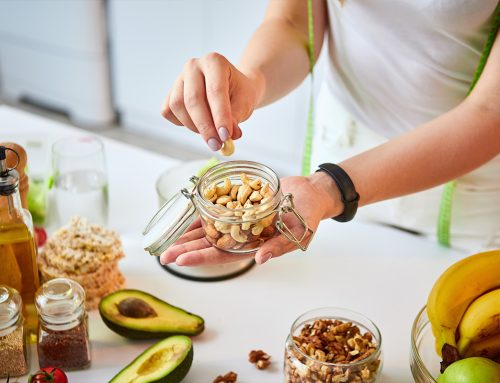Meal planning isn’t just about saving time and money—it’s a strategic ally in your quest for better blood sugar control and insulin sensitivity (how well your body uses sugar for energy). By embracing effective meal-planning strategies, you can transform your diet into a powerful tool against insulin resistance (when your body has trouble using sugar properly). Let’s explore six key strategies to enhance your meal planning, focusing on one or two at a time for lasting change.
The Strategic Role of Meal Planning
Planning your healthy meal options ahead is key to keeping your blood sugar levels steady. It helps you get all the nutrients you need, prevents sudden eating urges, and keeps your energy levels stable throughout the day. By using these strategies, you can create a meal plan that not only provides the right nutrition but also helps your body use glucose for energy more effectively.
Strategy #1: Embrace Variety
Variety isn’t just the spice of life—it’s essential for managing blood sugar. Eating a wide range of foods ensures a rich supply of nutrients that can improve insulin sensitivity. Try new and different recipes and ingredients gradually, focusing on fiber-rich fruits, vegetables, and whole grains that can help regulate blood sugar levels.
Strategy #2: Balance Your Plate
Proper proportions on your plate can significantly impact blood sugar control. Aim for a plate filled mostly with low-glycemic (foods that don’t raise blood sugar quickly), whole plant-based foods (foods close to their natural form that still have their fiber), complemented by lean proteins. This balance supports a slow and steady release of glucose, aiding insulin function.
Strategy #3: Seek Nutritional Harmony
A balanced mix of macronutrients (such as complex carbohydrates, healthy fats, and quality proteins) and micronutrients (vitamins and minerals) is crucial for maintaining stable blood sugar levels. Ensure your meals include these components to support healthy blood sugar control. If you’re unsure how to achieve this balance, consider making an appointment with your Tula Dietitian for personalized guidance.
Strategy #4: Plan Smart Snacks
Smart snacking can be a secret weapon for sustained energy and blood sugar stability. Plan for snacks that combine protein, fiber, and healthy fats—like apple slices with almond butter or plant-based yogurt with berries—to keep hunger and blood sugar spikes at bay.
Strategy #5: Prep Ahead for Success
Prepping ingredients or meals in advance can greatly support consistent blood sugar management. Some people find that preparing entire meals or sides works best for them, while others prefer to prep individual ingredients to mix and match throughout the week. This flexibility ensures you have healthy options readily available, reducing the temptation to reach for quick, unhealthy choices.
Strategy #6: Stay Flexible
Embrace flexible meal planning. Start with simple, adaptable meal plans that can fit into your daily life. This approach reduces stress and supports a sustainable, blood sugar-friendly eating pattern.
Strategy #7: Implementing Your Meals While Out of the House
Carrying food and snacks with you is the ultimate secret weapon for maintaining stable blood sugar levels. When you step out for the day, you never know what challenges might arise—whether it’s unexpectedly long work hours, delays that keep you from lunch, or traffic jams. Ensuring you always have your nutritious options at hand can be a powerful tool to stay on track and feel your best.
Strategic Meal Planning
Incorporating strategic meal planning into your routine isn’t just about managing what you eat—it’s about empowering yourself with the tools to enhance your blood sugar control and overall well-being. By addressing common pitfalls and embracing small, sustainable changes, you can make significant strides towards better health. Remember, it’s not about perfection but progress. Start with simple steps, adapt as needed, and celebrate each achievement along the way. With consistency and flexibility, you’re on the path to a healthier, more balanced life.
Sending Health Your Way!
The Tula Clinical Team
Reviewed by:
Aubree RN, BSN
Austin MS, RDN, CSR, LDN, CD
Tula Takeaways |
|---|
| 1. Start Small: Begin with one or two meal-planning strategies that resonate most with you. Gradually incorporate more as these habits become part of your routine. |
| 2. Be Flexible: Adapt your meal plans to fit your lifestyle. Flexibility reduces stress and helps maintain long-term adherence. |
| 3. Stay Consistent: Consistency is key to managing blood sugar levels effectively. Regular meal planning helps you stay on track with your health goals. |
The LIVE TULA blog is informational and not medical advice. Always consult your doctor for health concerns. LIVE TULA doesn’t endorse specific tests, products, or procedures. Use the information at your own risk and check the last update date. Consult your healthcare provider for personalized advice.






